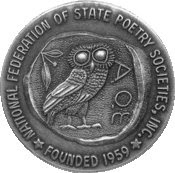Poet Denise Duhamel answers a question from a reader once a month at the Facebook group 'Fans of Denise Duhamel OR A Group of Duhalamites'.
This entry comes from a series that was begun by Dustin Brookshire. Visit Dustin's blog to read more from that series.
Christan Cannella asks, "What is the role of pop culture in your poems?"
Denise answers:
This is a great question, Christan. When I started writing poetry, I never used much pop culture in my work. I thought I "couldn't." But then came a pivotal moment: I was taking an undergraduate workshop with Thomas Lux who was looking at a poem of mine with bar of soap in it. The poem was about a craft I did as a child in which I pushed colored push pins into bars of soap to make faces-- eyes, noses, and mouths, with ribbon curled and pinned in as hair. No one really got my poem because bars of soap are usually square (and non head-like) and I found myself defending my poem saying the soap I used was oval, Dove soap. Then Lux asked why didn't I indicated that in the poem, which would have even given the poem more metaphorical layers. Up until then I really hadn't thought of utilizing name brands in poetry. Suddenly the world came alive with all the ways in which product brands could become great adjectives or simple nouns: Tide, Nikes, Cocoa Cris pies, Lexus, Revlon, Eggos...Later I would use such words in my poems to indicated time frames, settings (Americana) and so on. But it wasn't until I started writing about Barbie, the doll, for a book called KINKY, that I truly started exploring the cultural significance of pop.
Using Barbie dolls as muses, I was able to write political satire. I felt that when I tried to write about issues of gender and race head on, seriously, I would often become didactic. Barbie helped me avoid that impulse. I was pulled into Barbie's world when I wrote a poem about20Miss America in which Barbie surprisingly made a cameo appearance. Miss Americas are--like store mannequins and the Columbia pictures' logo--anywhere from 20-30 pounds thinner now than they were in the late fifties. A while later, I wrote about poem about watching my nieces play with Barbie. I was both fascinated and threatened by the image of Barbie, one of the endless examples of unrealistic body images for woman. But slowly, like a child playing with the doll, I began to write in Barbie's personna--sympathetically, trying to get at the rage and fears beyond her bland plastic countenance. She was, for me, a perfect vehicle for feminist issues. She smiles even when she's being poked, set on fire, or having her limbs pulled off. She literally can't stand on her own two feet without toppling over. Yet Barbie seems to have her own income and a number of prestigious postgraduate degrees as she's been a pilot, a doctor, and an astronaut. She is both the ultimate victim as well as the ultimate pioneer of resourcefulness.






















No comments:
Post a Comment